And who invented it?
Hi lovely makers! Last month I shared the beginnings of when and who invented the sewing machine. On this second post, I will talk about market expansion, the introduction of the electronic machine and the impact that the invention of the sewing machine had on society.
Are you ready to continue this trip back in time? Let's go!
First customers
Along the 1800s, clothing manufacturers were the main buyers of sewing machines to create ready-to-wear garments to sell in their shops. In the 1860s, middle-class consumers (aka the first sewists!) started to buy them to use at home. In England, the price of a machine ranged from £6 to £15, around 7 to 17 euros or $7.60 to $19 (it would be between £600 and £1500 in today's money!).
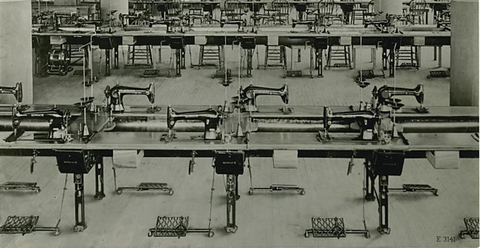
Apparently, the owners of these machines were more likely to spend time at home mending and making garments for their families than visiting friends (sounds familiar? Haha!). Magazines like the British Mrs. Beeton's Book of Household Management (a bit of a mouthful...) offered dress patterns with instructions.

A sewing machine helped the sewist produce a man's shirt in about an hour (I mean... I imagine the cutting was already done!) versus the 14 hours that it would usually take to sew it by hand (my worst nightmare...).
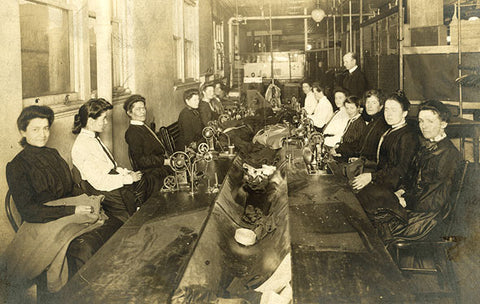
A group of Canadian seamstresses at work at a clothing manufacturer company, 1904
More innovations
Apart from the sewing machine, American Joseph M. Merrow invented the first crochet machine in 1868. Yes, you've heard right! Overlockers were called "crochet machines" at first and were mainly use for finishing around the top's of men's socks. Take a look at one of the first Merrow overlockers.
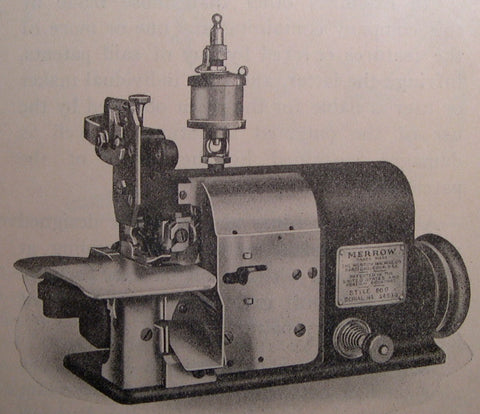
The Merrow Machine Company became so successful that they have been specialised in overlockers ever since then!
In 1885, our dear friend Isaac Merritt Singer (go back to my first post to know what he was up to at the time... I promise you a lot of drama!) released the model 27. This shuttle hook machine, also known as oscillating hook sewing machine, had a hook that, instead of rotating in a full circle, oscillated back and forth.
In this system, the hook picks up the upper thread from the needle and carries it down around the bottom of the bobbin cage.
Take a look at the manual that came with the machine at the time...

The electric machine arrives!
Singer Sewing Co. were the pioneers of the electric sewing machine which was introduced in 1889 and offered for general sale by the end of the First World War.
The first electric machines had a motor strapped on the side, but as more homes gained power, they became more popular and the motor was gradually introduced into the casing (phew!).
Take a look at this beauty from 1929, the Singer 128K.
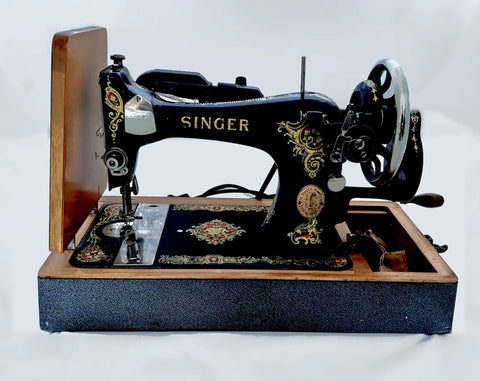
Etsy
Sewing machines were strictly mechanical until the 1970s, when electronic machines were introduced to the market. They incorporated circuit boards, computer chips and additional motors, enabling new features such as automating thread cutters (my fav!), needle position and back-tacking, among many others.
Look at this model from Singer. Such a cool design!

Ebay
The main drawback of the electronic machines, even to this day? They don't last as long as the mechanical ones, which can last over 100 years, because of their electronic complexity.
The social impact of the sewing machine
Women used to spend much of their time mending their family's clothing before the sewing machine was invented. Middle-class housewives would devote several days of each month to this task, as most people, except the very rich, would only have two sets of clothing: a work outfit and a Sunday outfit.
Even for experienced seamstresses, it took around 14 hours to make a dress shirt for a man or 10 hours for a woman's dress... and all done by hand!
The invention of the sewing machine reduced this time significantly allowing women to seek employment out of the household (taking down the patriarchy one step at a time!). Also, the industrial use of sewing machines further reduced the burden placed upon housewives, moving clothing production to large-scale factories.
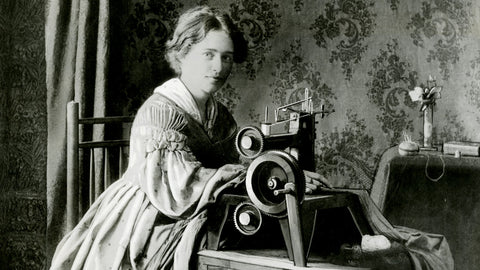
Getty Images via BBC
This change resulted in a great increase in productivity; fewer workers could produce the same amount of clothing, also reducing prices significantly. The main problem resulting from this, was that many seamstresses working from home or at factories lost their jobs.
In the long run these now unemployed skilled workers along with thousands of men and children would eventually be able to gain employment in jobs created as the clothing industry grew (where are those children-shouldn't-be-working laws!?).

Manchester factory girls making men's shirts on Wheeler & Wilson machines, 1909.
The impact of the creation of the sewing machine in the clothing industry resulted in major changes for other industries as well. Cotton production needed to increase in order to match the demand of the new clothing factories. Other industries involved in the process benefited as well such as metal companies who provided parts for the machines, and shippers to move the increased amounts of goods.
In addition to being important for garment production, sewing machines became essential in the manufacturing of upholstery, curtains and towels, toys, books, and more.
As you can see we have so much to thank to the sewing machine inventors and to all those women who wanted to change how the world worked.
I hope you enjoyed this post. You might look at your sewing machine differently next time you use it! :)
Thanks for reading!
Ana
xxx
Main reference link:
Wikipedia
